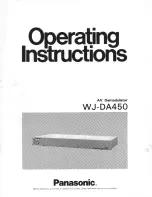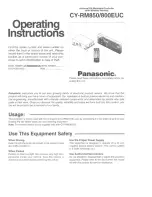
Getting Started 17
8300GETM.DOC TI-83 international English Bob Fedorisko Revised: 02/19/01 11:06 AM Printed: 02/19/01 11:06
AM Page 17 of 18
Getting Started has introduced you to basic TI
.
83 operation. This guidebook
describes in detail the features you used in Getting Started. It also covers the
other features and capabilities of the TI
.
83.
You can store, graph, and analyze up to 10 functions
(Chapter 3), up to six parametric functions (Chapter 4), up
to six polar functions (Chapter 5), and up to three
sequences (Chapter 6). You can use
DRAW
operations to
annotate graphs (Chapter 8).
You can generate sequences and graph them over time. Or,
you can graph them as web plots or as phase plots
(Chapter 6).
You can create function evaluation tables to analyze many
functions simultaneously (Chapter 7).
You can split the screen horizontally to display both a
graph and a related editor (such as the
Y=
editor), the
table, the stat list editor, or the home screen. Also, you can
split the screen vertically to display a graph and its table
simultaneously (Chapter 9).
You can enter and save up to 10 matrices and perform
standard matrix operations on them (Chapter 10).
You can enter and save as many lists as memory allows for
use in statistical analyses. You can attach formulas to lists
for automatic computation. You can use lists to evaluate
expressions at multiple values simultaneously and to graph
a family of curves (Chapter 11).
You can perform one- and two-variable, list-based
statistical analyses, including logistic and sine regression
analysis. You can plot the data as a histogram, xyLine,
scatter plot, modified or regular box-and-whisker plot, or
normal probability plot. You can define and store up to
three stat plot definitions (Chapter 12).
Other TI-83 Features
Graphing
Sequences
Tables
Split Screen
Matrices
Lists
Statistics
















































